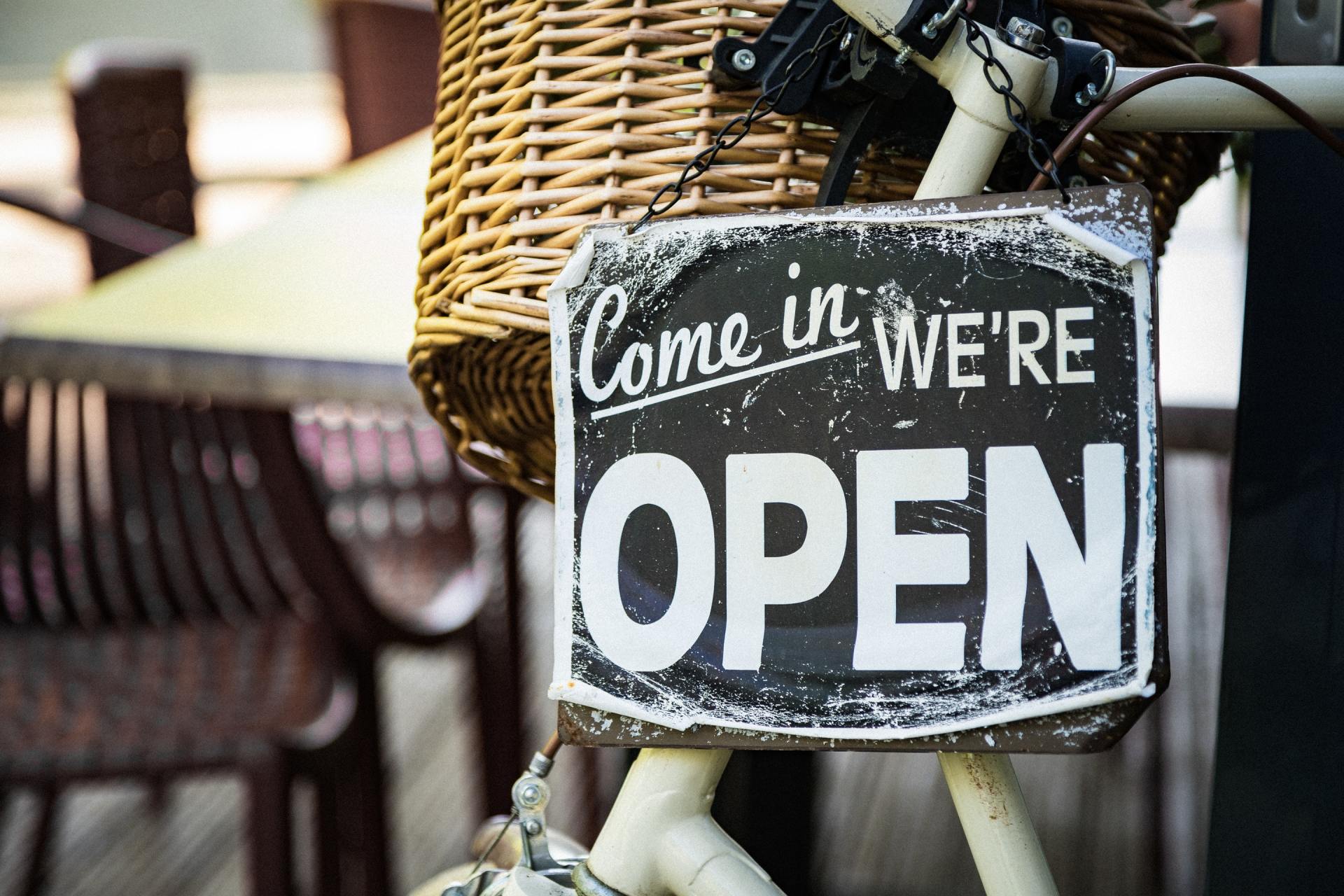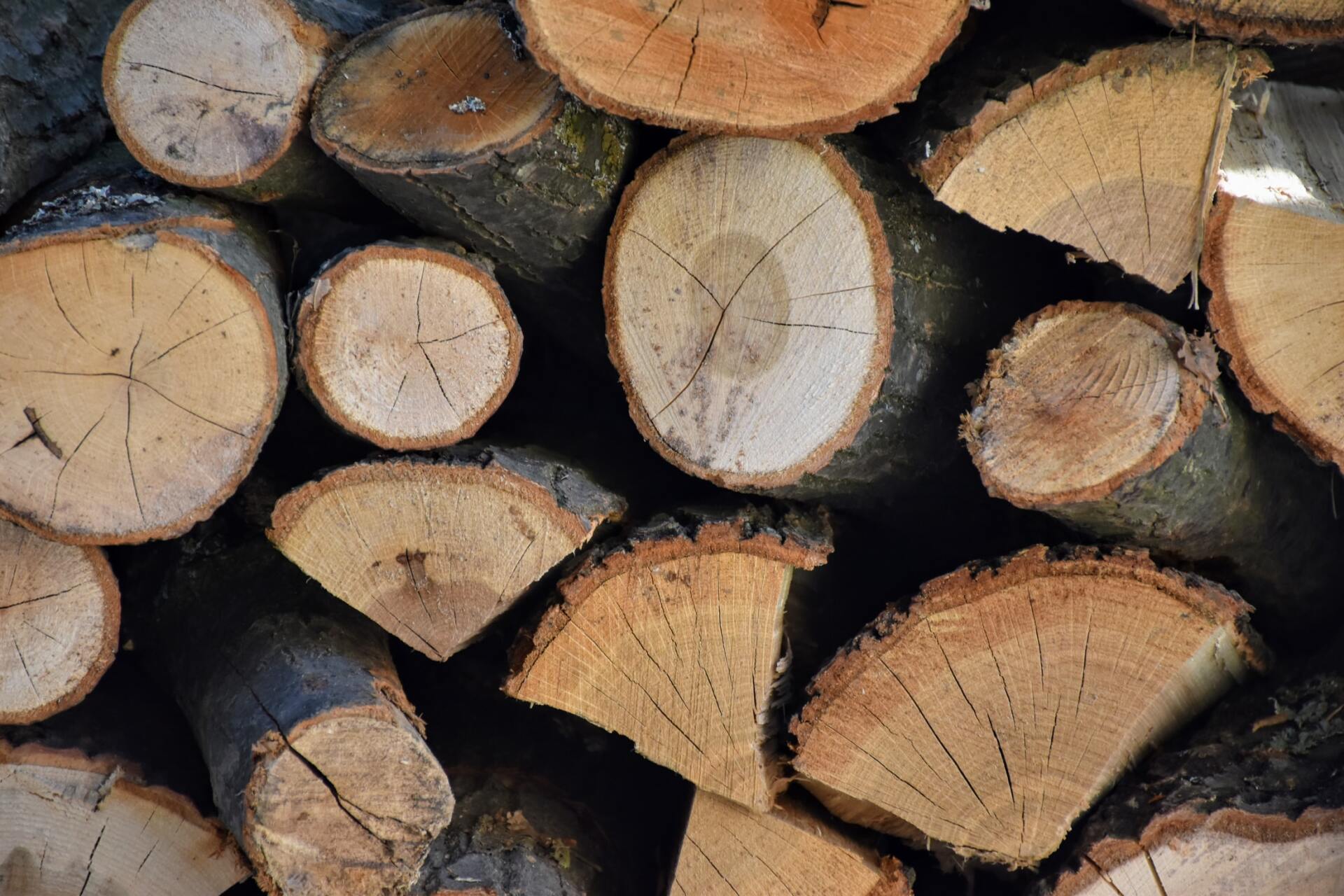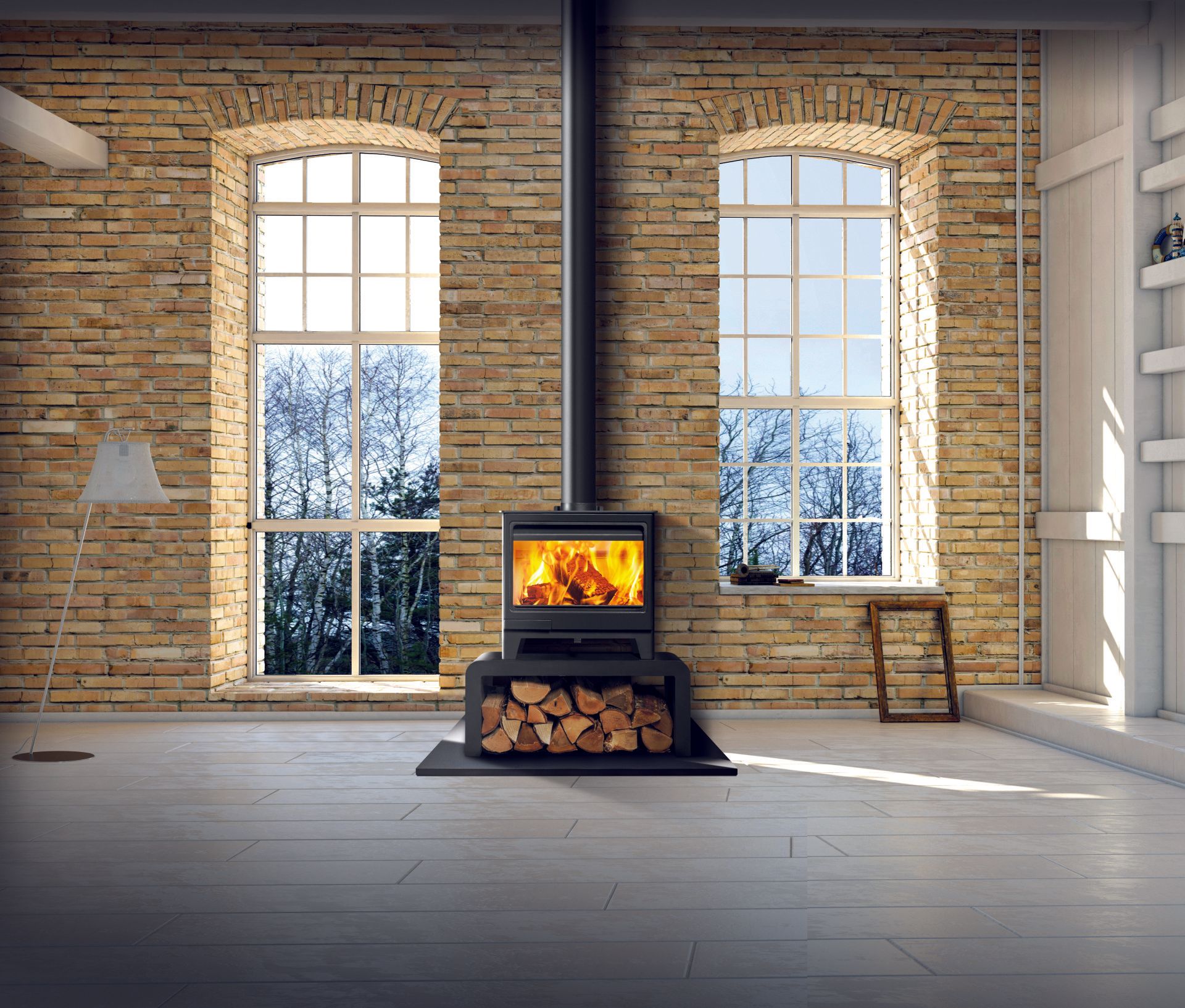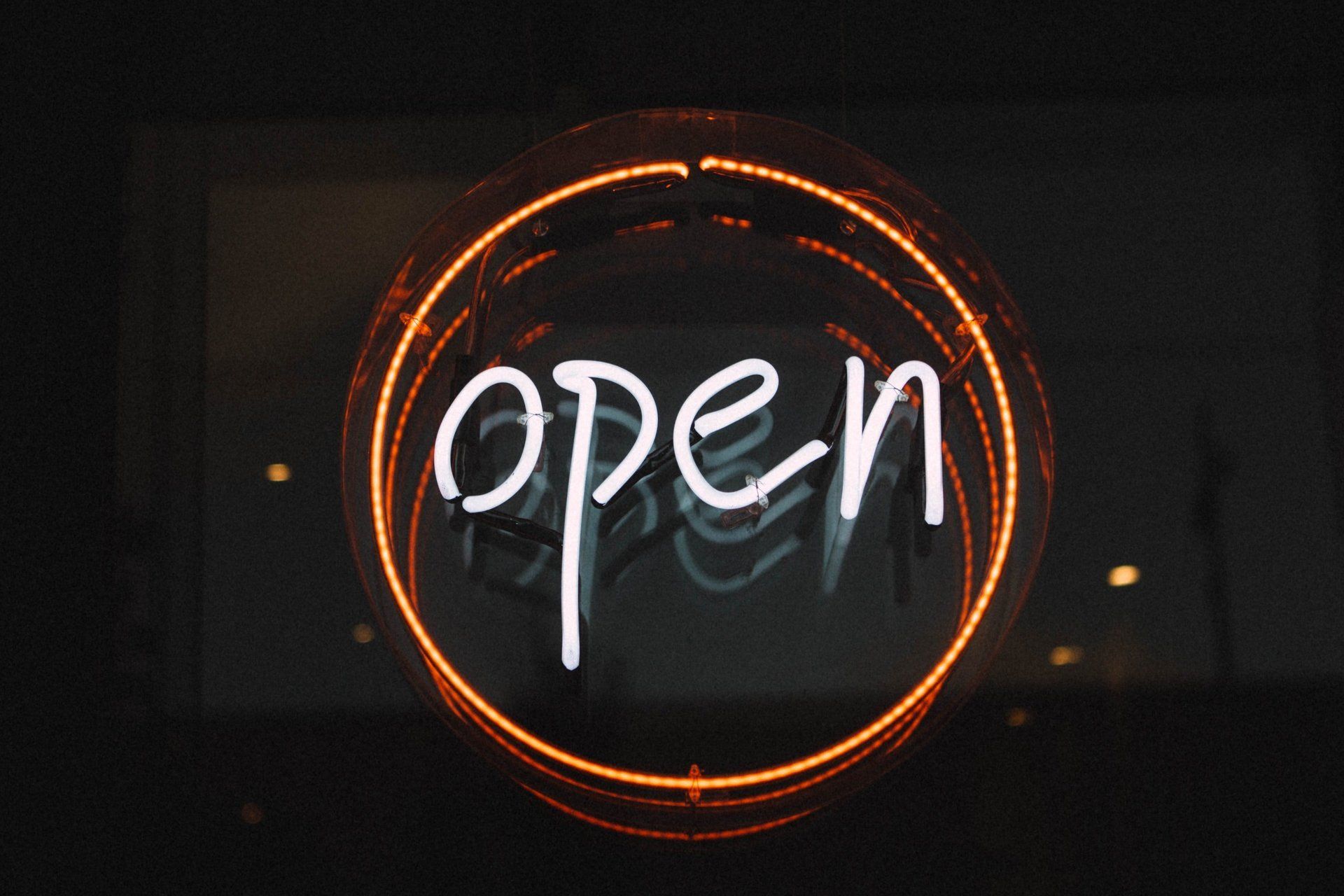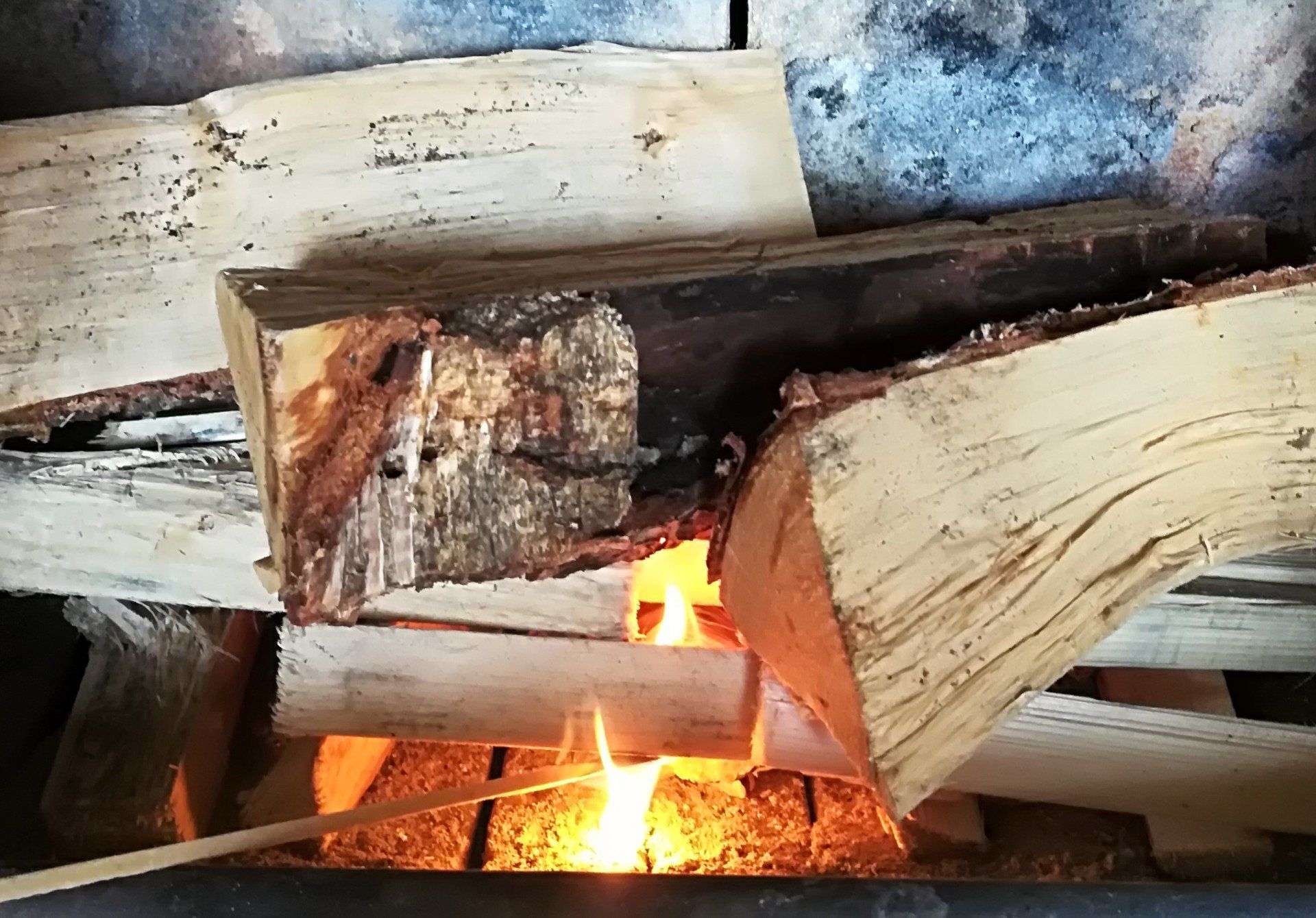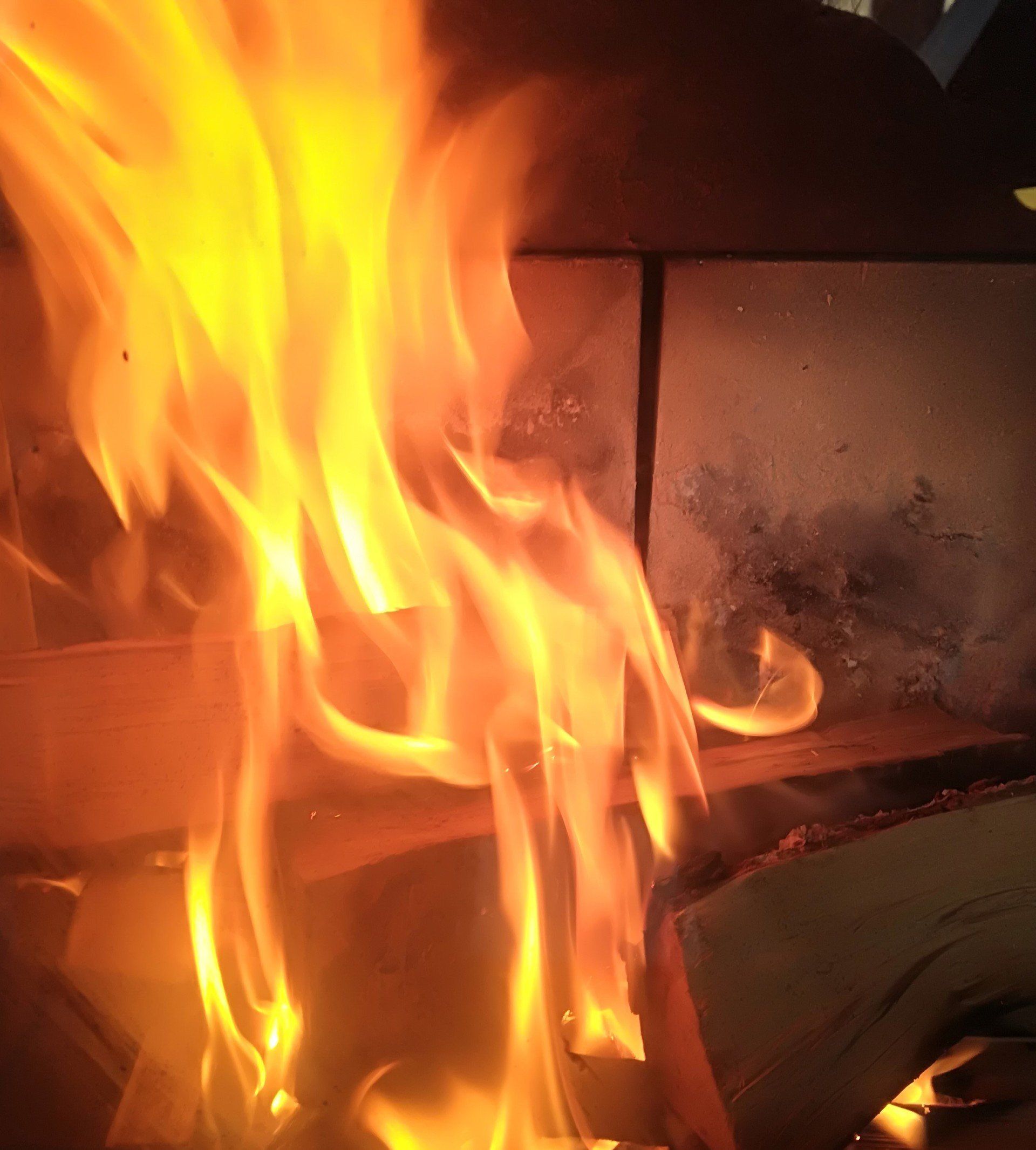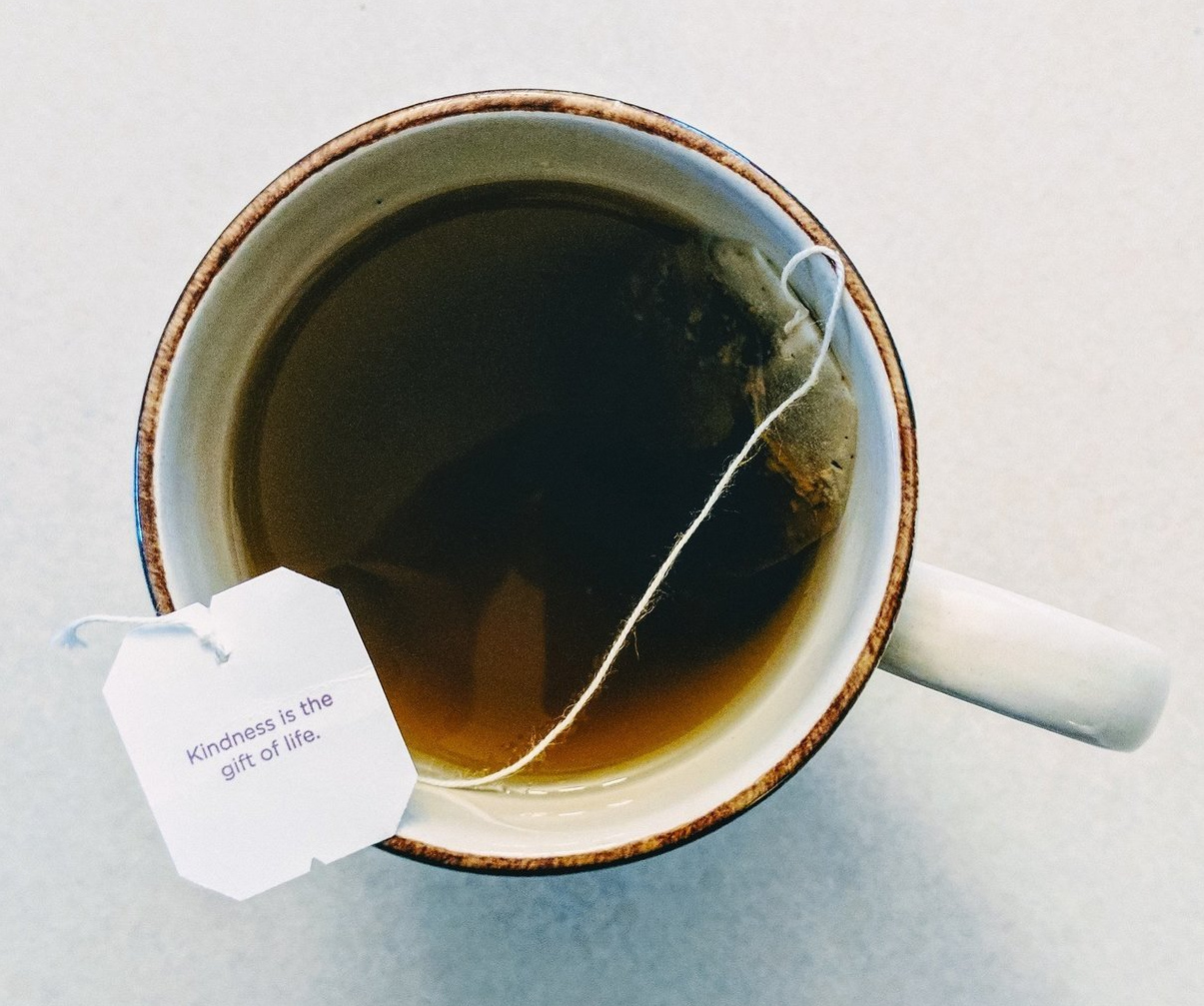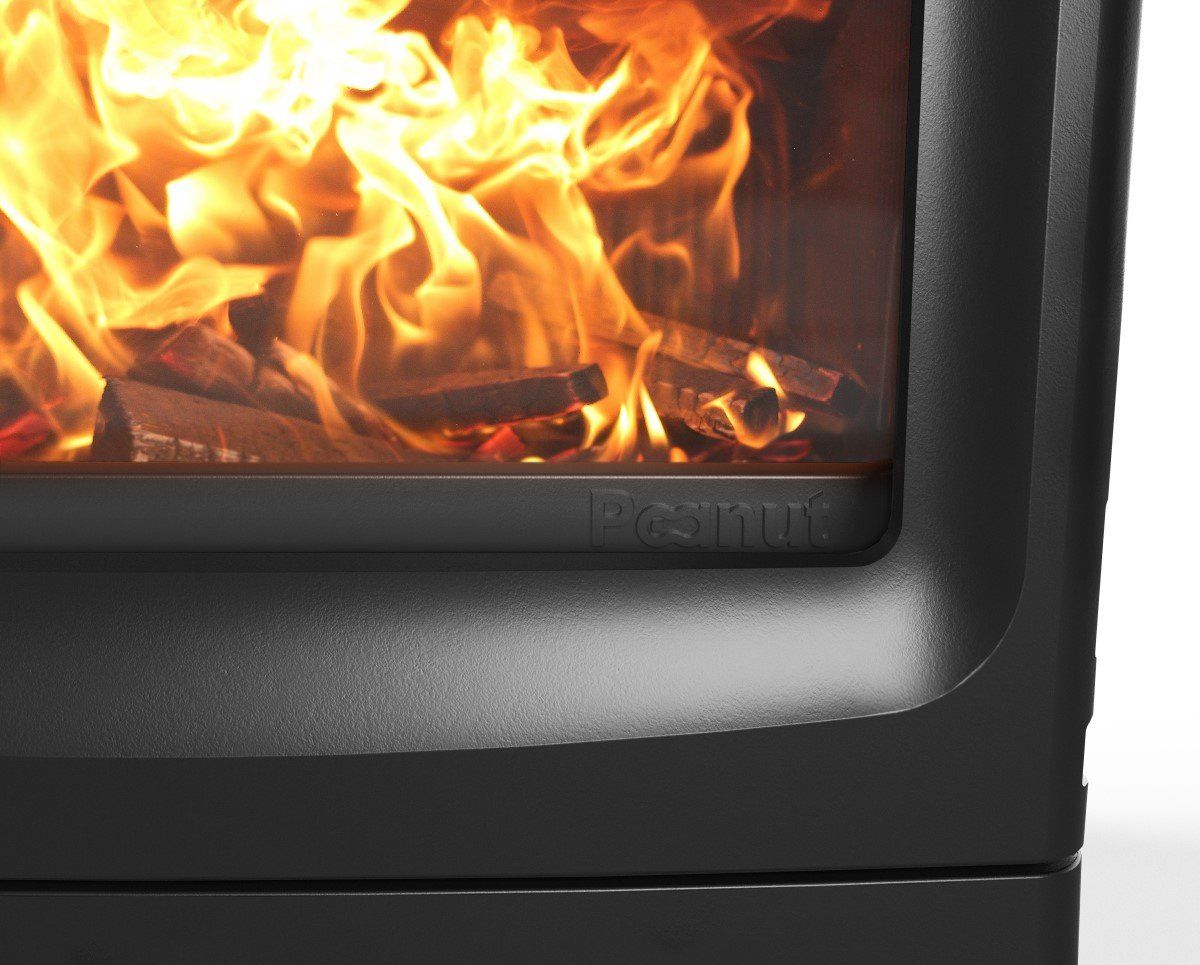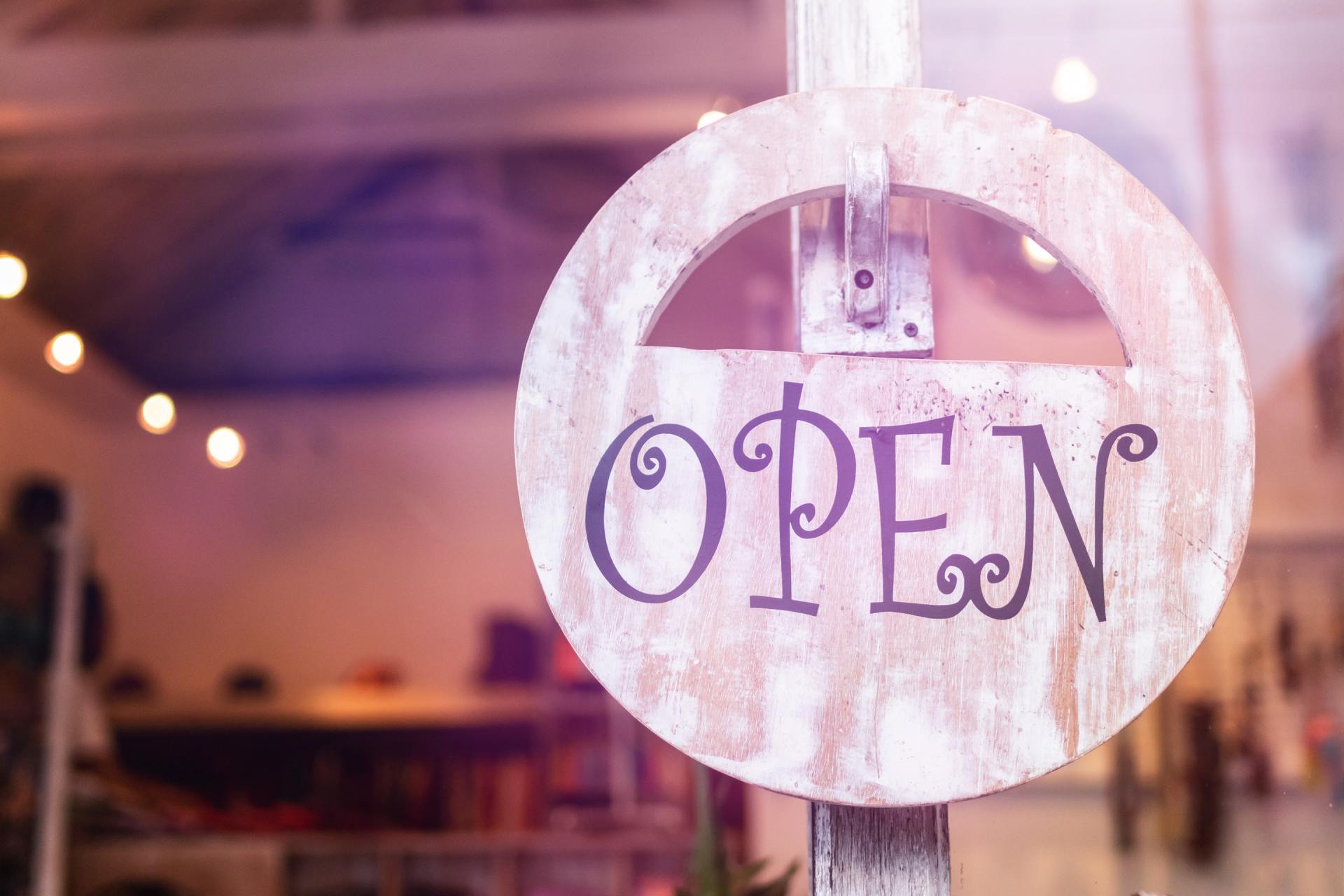A Guide to: Lighting your Stove
A general guide to lighting your stove.
You will need:
- Firelighter’s or newspaper.
- Dry kindling (either seasoned or kiln dried).
- Small Logs (either seasoned or kiln dried).
- Bigger Logs (either seasoned or kiln dried).
- Long safety matches or a safety lighter.
Please click hereto check our wood guide for further advice on burning logs.
Always check your stove’s user manual for lighting advice, as some models can vary.
Step One
Ensure your door controls are set to the open position.
Place a firelighter on the grate/bottom brick. The number of firelighters needed can depend on the type used, check the instructions on the box.
If using newspaper, ball up five to ten sheets and place on the grate/bottom brick.
Step Two
Stack kindling on top of the firelighters. A good handful will usually do the trick (7-12 dry sticks).
Stack in a criss-cross pattern like above.
Step Three
Place two or three small logs on top of the kindling.
Step Four
Using a long safety match or lighter to light the firelighter, and once the firelighter is lit close the door.
Please note: some stoves require the door to be open by up to 3cm for five to ten minutes when lighting, please check your user manual supplied with your stove.
Step Five
Once your fire has caught, (usually within 5 – 10 minutes) add more small logs as needed.
For the first 30-45 minutes, it is best to only add small logs.
Step Six
After 30-45mins you can add bigger logs.
Adjust the primary air control as necessary from this point. Please check your stove user manual for the best settings, as directions can vary depending on models.
Step Seven
Sit back and enjoy the view. Adding longs as and when needed.
Refuelling
Refuel onto glowing embers, not flames. If you open the door while the fuel is flaming, then flames can come out of the opening.
When adding more fuel to the firebox, ensure that there are enough glowing embers remaining so that any new fuel can ignite quickly. If the fuel cannot catch quickly excessive amounts of smoke will be produced.
When there is only a small number of glowing embers, add kindling to avoid excessive smoke.
When refuelling, leave the air inlets open for a minute before adjusting to the setting.
Please always remember to wear heat resistant gloves while refuelling.
Showroom Tip: Get a Stove Thermometer
A stove thermometer is one of the most useful gadgets when it comes to burning fuel on a wood burner or multi fuel stove.
They are magnetic and stick to the flue pipe.
They usually have three areas:
- Creosote/Sooting
- Optimum/Best Operation
- Overheating
It is best to get your thermometer to read as ‘Optimum/Best Operation’ as quickly as safely possible. As if the stove remains in the ‘Creosote/Sooting’ area for extended periods it can cause a high build-up of creosote, soot and tar, which can cause a chimney fire if it catches alight. To avoid heavy build-ups, it is best to get your stove to a high burn for at least 20 minutes, twice during the burn time. E.G. If you are only lighting your fire for an evening, try to get the fire as hot as possible without overheating the unit, twice during that evening for at least 20 minutes. This will help reduce build ups of soot, tar and creosote.
Beware overheating your stove
If your stove thermometer reads that it is ‘overheating’, shut down the air controls as quickly as possible and wait for the thermometer is well within ‘Optimum/Best Operation’ before adding more fuel.
Overheating/Overfiring your stove can lead to chimney fires and will invalidate the guarantee on your stove and or pipework.
Overloading
One of the most common causes of overheating a stove is through loading too much fuel into the firebox. Be careful when adding logs to your firebox, some stove user manuals will advise on the optimum log load or ask your installer for advice.
Showroom Tip: Wood burns best on a bed of ash.
If you are regularly burning wood, leave a bed of ash over the grate/bottom of the firebox. Only remove surplus ash when necessary, as wood will always burn best on a bed of ash.
